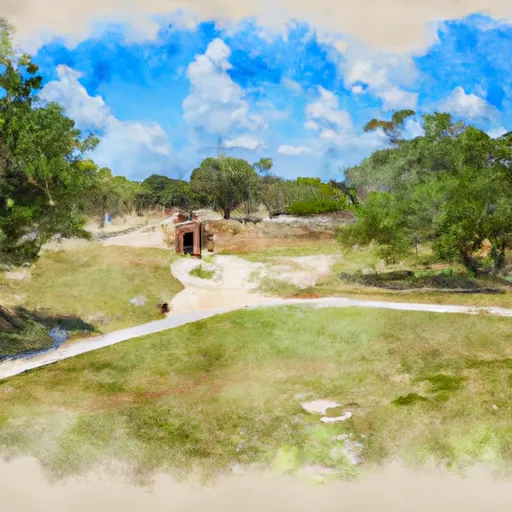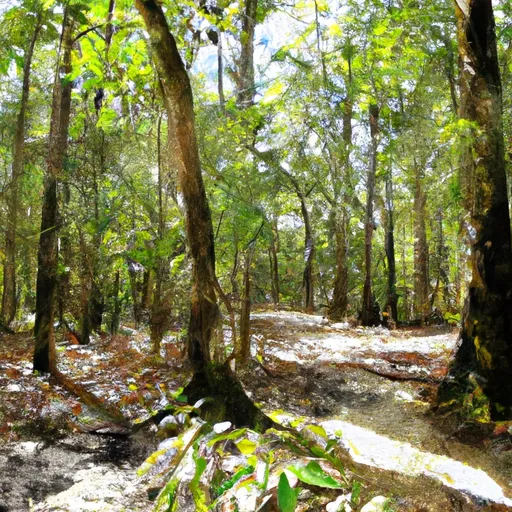Guana Tolomato Matanzas National Estuarine Research Reserve
Rate this placeLast Updated: December 29, 2025
The Guana Tolomato Matanzas National Estuarine Research Reserve (GTMNERR) is located in northeast Florida and covers over 73,000 acres of salt marshes, tidal creeks, and upland habitats.
°F
°F
mph
Wind
%
Humidity
Summary
The reserve was established in 1999 as a partnership between the National Oceanic and Atmospheric Administration and the state of Florida to protect and manage the unique estuarine ecosystem.
One of the main reasons to visit GTMNERR is to experience the diverse habitats and wildlife that can be found in the reserve. Visitors can hike through the upland forests or kayak through the tidal creeks to see a variety of birds, fish, and other animals. The reserve also offers educational programs and activities for visitors of all ages, including guided nature walks and lectures.
One specific point of interest in GTMNERR is the Guana River Wildlife Management Area, which covers over 10,000 acres and is home to a variety of plant and animal species. Visitors can hike or bike along the trails to see wildlife such as gopher tortoises, bobcats, and alligators.
Interesting facts about GTMNERR include the fact that it is home to the largest contiguous stretch of undeveloped coastline in northeast Florida and that it serves as an important nesting site for sea turtles. The reserve also contains archaeological sites that provide evidence of human habitation dating back thousands of years.
The best time of year to visit GTMNERR is in the spring or fall when the weather is mild and there are fewer crowds. However, the reserve is open year-round and offers activities and programs throughout the year.
Overall, the Guana Tolomato Matanzas National Estuarine Research Reserve is a unique and important ecosystem that offers visitors a chance to experience the natural beauty of northeast Florida while learning about the importance of conserving these habitats for future generations.
Weather Forecast
Park & Land Designation Reference
Large protected natural areas managed by the federal government to preserve significant landscapes, ecosystems, and cultural resources; recreation is allowed but conservation is the priority.
State Park
Public natural or recreational areas managed by a state government, typically smaller than national parks and focused on regional natural features, recreation, and education.
Local Park
Community-level parks managed by cities or counties, emphasizing recreation, playgrounds, sports, and green space close to populated areas.
Wilderness Area
The highest level of land protection in the U.S.; designated areas where nature is left essentially untouched, with no roads, structures, or motorized access permitted.
National Recreation Area
Areas set aside primarily for outdoor recreation (boating, hiking, fishing), often around reservoirs, rivers, or scenic landscapes; may allow more development.
National Conservation Area (BLM)
BLM-managed areas with special ecological, cultural, or scientific value; more protection than typical BLM land but less strict than Wilderness Areas.
State Forest
State-managed forests focused on habitat, watershed, recreation, and sustainable timber harvest.
National Forest
Federally managed lands focused on multiple use—recreation, wildlife habitat, watershed protection, and resource extraction (like timber)—unlike the stricter protections of national parks.
Wilderness
A protected area set aside to conserve specific resources—such as wildlife, habitats, or scientific features—with regulations varying widely depending on the managing agency and purpose.
Bureau of Land Management (BLM) Land
Vast federal lands managed for mixed use—recreation, grazing, mining, conservation—with fewer restrictions than national parks or forests.
Related References

 Guana River Wildlife Management Area
Guana River Wildlife Management Area
 Fort Mose Historic State Park
Fort Mose Historic State Park
 Deep Creek State Forest
Deep Creek State Forest
 Vilano Oceanfront Park
Vilano Oceanfront Park
 Fountain of Youth Park
Fountain of Youth Park